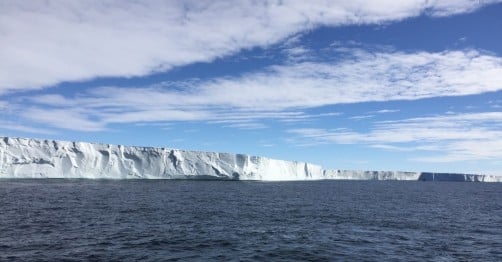A new study has found that ocean currents moving in a winding pattern play a big role in melting Antarctic ice shelves. This melting could cause sea levels to rise significantly. The study was published in a journal called Nature Communications.
The researchers discovered that when these winding ocean currents interact with the ocean floor, they cause warm water to rise to shallower depths. This warm water then reaches the ice shelves and makes them melt faster. Before this study, most people thought that the main cause of ice shelf melting was the winds over the Southern Ocean.
Focusing on Vulnerable Ice Shelves
The study focused on two ice shelves in Antarctica called Pine Island and Thwaites. These ice shelves are changing very quickly and are especially vulnerable to warming ocean waters. They act like big barriers that keep the glaciers behind them from flowing into the ocean. If these ice shelves melt and collapse, it could cause global sea levels to rise a lot, which would be a big problem for people living near the coast.
The Importance of Warm Water
The researchers looked at a layer of warm water that sits below the cold surface waters. They call this layer the ‘modified Circumpolar Deep Water’. “The strength and path of ocean currents around the ice shelves directly control how much warm water flows in, which affects how fast the ice shelves melt,” explains Taewook Park, one of the researchers.
Challenging Previous Beliefs
Until now, people thought that strong westerly winds north of the Amundsen Sea pushed ocean currents along the shelf break, bringing warmer water towards the ice shelves. This was thought to happen more during El Niño events. However, the new study challenges this idea.
“Our findings challenge conventional wisdom,” Nakayama asserts. “Our study underscores that the interplay between meandering ocean currents and the ocean floor generates upwelling velocity, bringing warm water to shallower depths. Subsequently, this warm water reaches the ice-ocean interface, accelerating ice shelf melting.”
This study introduces a new way of thinking about what causes Antarctic ice shelves to melt. It shows that ocean currents play a bigger role than previously thought. With this new information, scientists will need to re-evaluate how winds affect Antarctic ice loss, which could change predictions about the future.


